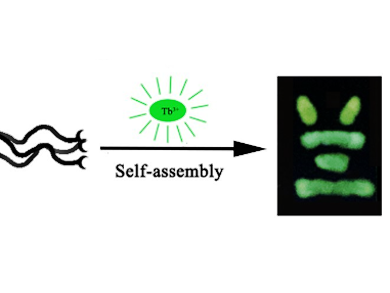Collagen is a major component of the extracellular matrix and is important for skin tissue regeneration, wound healing, bone grafts, and so forth. Therefore, the design of peptides that can mimic the properties of natural collagen may lead to functional biomaterials with potential applications in the medical field.
The group of Jianxi Xiao at the State Key Laboratory of Applied Organic Chemistry, Lanzhou University, P. R. China, has combined lanthanide ions with a specially designed peptide that results in the formation of self-assembled helical nanoropes. These nanoropes display the distinct periodic banding pattern characteristic of natural collagen. The design of the peptide relies on a repeating sequence of (Pro-Pro-Gly)12 in the center, for thermally stable triple helix formation, flanked by two additional aspartic acids at both N- and C-terminal ends, providing coordination sites for the lanthanide ions.
Owing to the incorporation of the lanthanide ions, these materials have tunable photoluminescence properties, and, therefore, may have great potential in cell imaging, medical diagnostics, and luminescent scaffolds for cell cultivation.
- Ln3+-Mediated Self-Assembly of a Collagen Peptide into Luminescent Banded Helical Nanoropes,
Manman He, Lang Wang, Jiang Wu, Jianxi Xiao,
Chem. Europ. J. 2016.
DOI: 10.1002/chem.201504337





A great job!